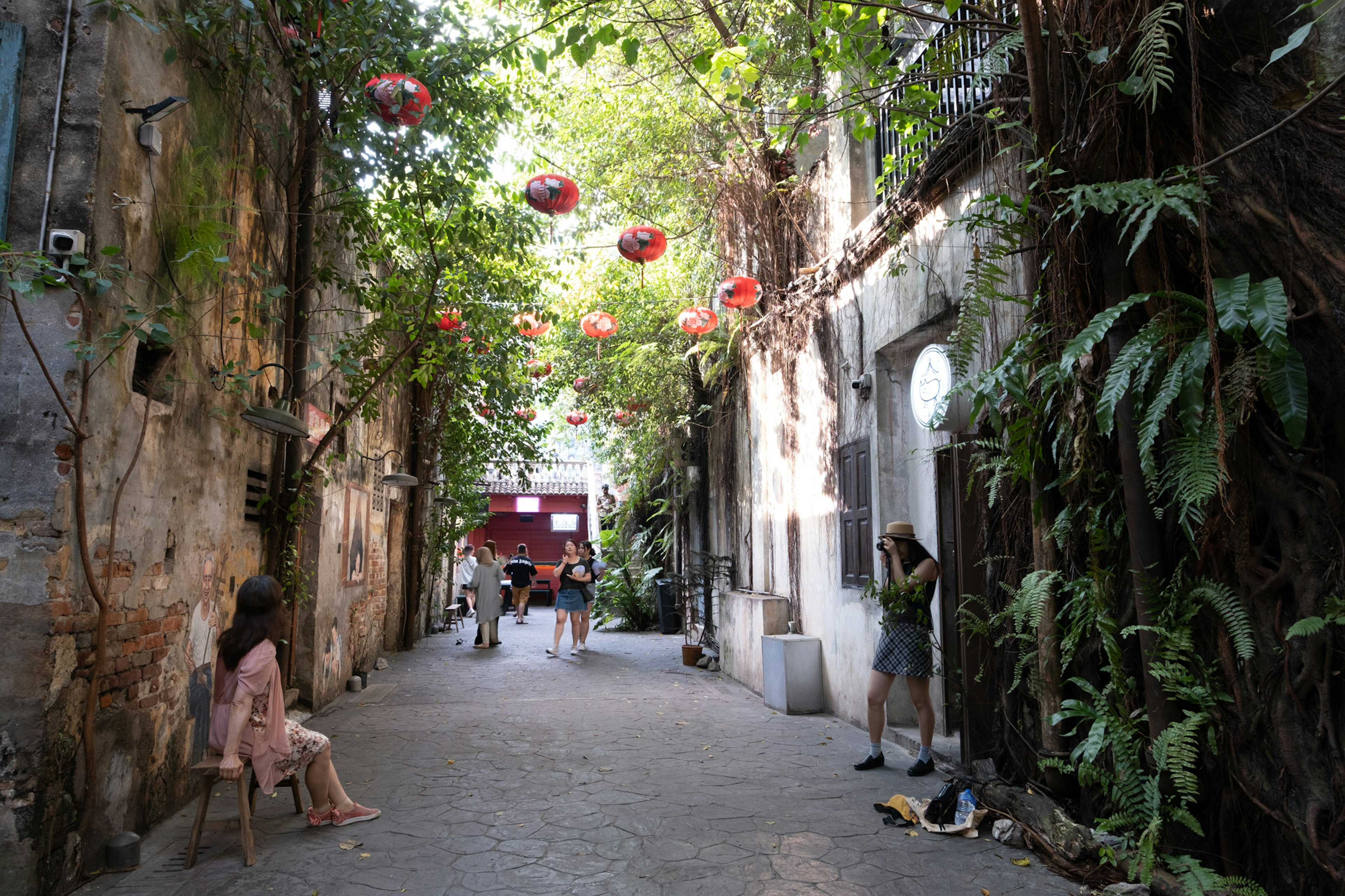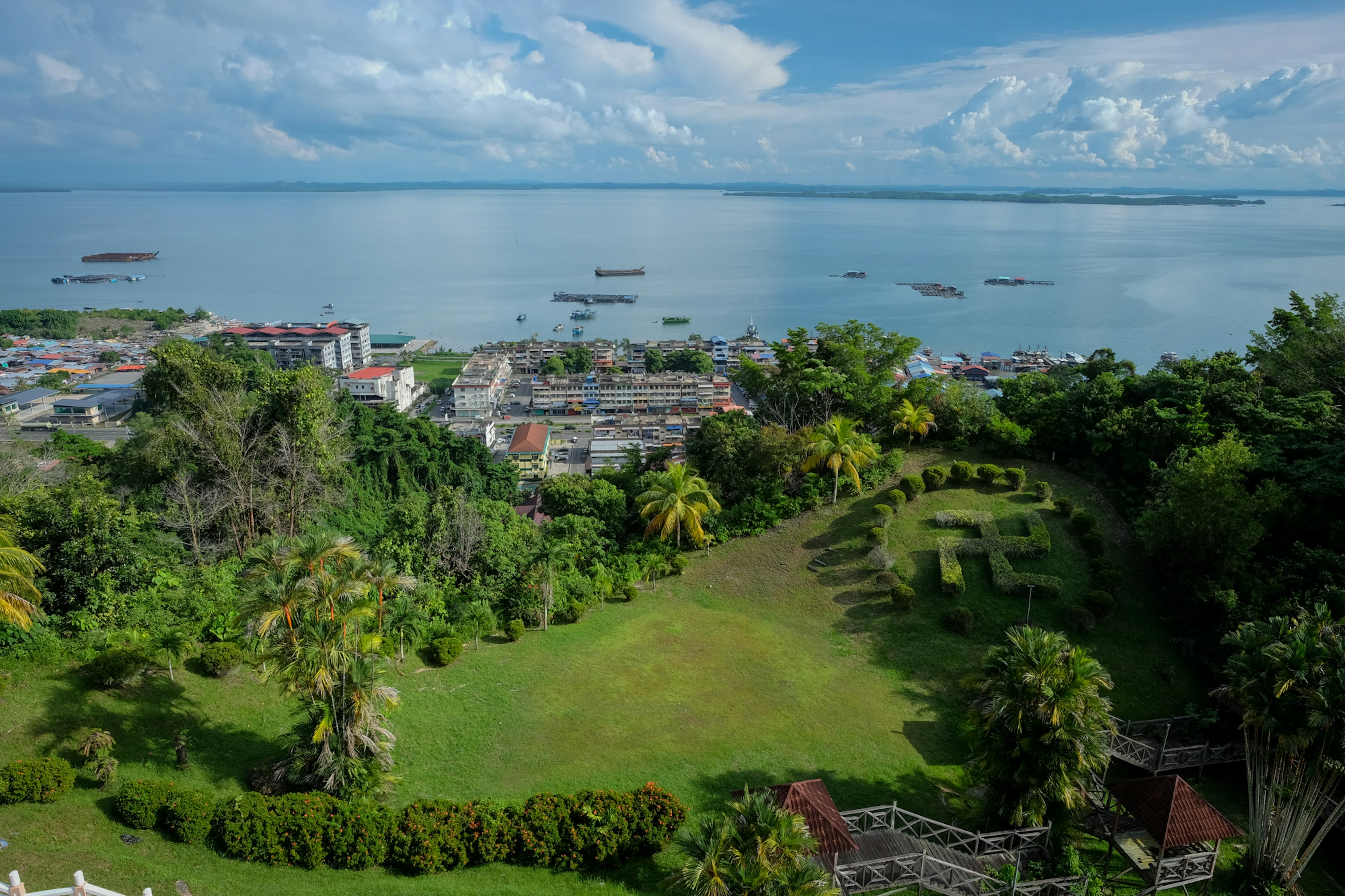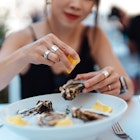
7 days exploring the rich food and culture of Malaysia
Sponsored by

Sep 1, 2023 • 8 min read

A dazzling, explosive melting pot of diverse communities shaped Malaysia’s rich culture, pioneered its labyrinthine mash-up of cuisines, and coexisted in its unique blend of architecture © Kit Yeng Chan / Lonely Planet
No country in Asia, and possibly the world, is such a kaleidoscope of as Malaysia.
The main puzzle of Malay, Chinese, and Indian communities living in the Peninsula is completed by 18 aboriginal groups, the orang asli. Across the sea in Borneo, there are more than sixty different ethnic groups in both Sarawak and Sabah.
This dazzling, explosive melting pot shaped Malaysia’s rich culture, pioneered its labyrinthine mash-up of cuisines, and coexisted in its unique blend of architecture. It’s impossible to experience all Malaysia offers in just one week – but with these insider suggestions, you’ll get deeper than most.

Day 1: Food, heritage, and art on Penang Island
A UNESCO World Heritage Site and the first British colonial settlement in Southeast Asia, George Town on Penang Island is the poster boy of Malaysia’s diversity. Start in Jalan Masjid Kapitan Keling, also known as “Harmony Street,” where the regal profile of the namesake black-domed mosque stands yards away from a pantheon of Hindu gods etched on the gopuram of the Sri Mahamariamman temple. Further up, devotees light joss sticks for Goddess of Mercy Kwan Yin at her dedicated shrine.
Just behind it, pre-war Sino-Portuguese shophouses rub corners with hip cafes and bistros in a grid of heritage lanes etched with the colorful mural art that, since 2012, kickstarted the rise of a cohesive art scene. Hin Bus Depot and COEX@Kilang Besi in Jalan Gurdwara host rotating exhibits and events with local artists and creatives. For literary events, check out Hikayat on Beach Street.
Food-wise, Penang is well-known around the world: a plate of local nasi kandar (a blend of rice and fiery curries originally served out of the jars that Indian Muslim traders carried with a pole over their shoulders) is a local specialty as much as the tangy Penang Laksa and Hokkien Mee – Penang’s variety is served in prawn soup, not dry with dark soy sauce, like in the rest of Peninsular Malaysia.
In the afternoon, take the funicular train up 2,900-foot-high Penang Hill, the first hill station founded by the British in 1788 Malaya and a UNESCO Biosphere Reserve since 2021. Descend and enjoy more views from the pavilions of nearby Kek Lok Si, one of Southeast Asia’s largest Buddhist temple complexes, before hunting for more hawker food at New Lane Hawker Center or splurging on a Peranakan (mixed Malay-Chinese heritage) dinner in George Town.

Day 2: Chase history and local culture in Taiping and Kuala Sepetang
Trains connect Butterworth on Penang state’s mainland to Taiping, the former colonial capital of Perak state from 1875 to 1937. Set at the foot of Maxwell Hill – where the newly opened Maxwell Base Camp has a campsite and guided forest hikes to the Renting waterfall and the mist-shrouded bungalows scattered atop this 4,100-foot-tall peak – Taiping was voted the world’s third most sustainable city in 2019. Its peaceful lake gardens are a short walk to an old town lined with Sino-Portuguese shophouses packed with great food.
Built in 1928 by a rich Chinese trader, the Peace Hotel has silky Char Koay Teow garnished with prawns, bean sprouts and tofu. Nearby Larut Matang Hawker Center is one of Taiping’s most popular. Try the fishball char koay teow from Stall 78 or the popular chicken rice and wan tan mee from Stall 61 and 72. Or cool down with a bowl of cendol (a mix of shaved ice, jelly, and sweet gula melaka) at either Bismillah or Ansali in Jalan Barrack.
Right beyond Taiping’s train station is the Antong Coffee Mill, which sits next to the former home of Sun Yat-sen, the first provisional President of the Republic of China and first leader of the Kuomintang, who spent time here in the early 1910s.
Ten miles to the west, the Matang Mangrove Forest Park showcases the area’s mangrove-draped ecosystem on the way to the river town of Kuala Sepetang. After a visit to the local charcoal kiln factories and a lazy bumboat ride on the estuary (with some luck, you may see dolphins), end the day with a fresh Malay shell-out-style seafood dinner at Restoran Nelayan PNK Matang.

Day 3: Explore Ipoh
It’s a short train ride to Ipoh’s beautiful 1917 Moorish-styled station, from where the colonial-meets-Art Deco architectural mash of Old Town Ipoh is across the adjacent historical padang (square). Hip Concubine Lane packs cafes and souvenir shops, while quieter Market Lane has some of the city’s most photographed street art. Just across the road, the restored cobbled lanes of Kong Heng Square lead to Ipoh’s first boutique hotel (once the sleeping quarters of a Chinese opera troupe), bistro, and a daily Artisan Market.
Ipoh’s delicious, too. Try a cup of the town’s signature white coffee at Sin Yoon Loong in Jalan Bandar Timah, where the brew was invented by roasting beans with palm oil’s margarine more than 80 years ago. The curry or mushroom chee chong fun (rolled flat rice noodles) and kaya (coconut jam) puffs on sale are also good enough to queue for. For lunch, find a seat among the locals at Restoran Ong Kee (48 Jalan Yau Tet Shin) and try bean sprout chicken, another Ipoh delicacy.
In the afternoon, get a feel for Ipoh’s tin-mining days at Han Chin Pet Soo, a restored Hakka Chinese clan house and museum, and then visit at least one of the city’s several Buddhist cave temples. With a 40-foot-tall seated Buddha and a towering viewpoint, the Perak Cave has unobstructed views over the limestone karst embracing Ipoh and the Kinta River Valley.

Day 4: Mix old and new in Kuala Lumpur
To make the most of a day in the sprawling Malaysian capital, catch an early train into town and transfer on the commuter service to the Batu Caves, where a rainbow-colored staircase leads to one of the country’s most important Hindu cave temples (beware of the sneaky monkeys). As you return, hop off at Kampung Baru to experience the last remaining Malay traditional enclave before you check out the city’s futuristic stroke by gliding across the newly built Saloma Bridge, a space-age shortcut to the multi-storied malls of KLCC, right where the iconic Petronas Towers soar to the sky.
Dedicate the late afternoon and evening to explore Chinatown, one of the city’s most historical and central districts, dominated by 2,225-foot-high skyscraper Merdeka 118. Opened in 2023, it’s currently the second-tallest building in the world. At ground level, historical lanes like Petaling Street, Jalan Sultan, and their back alleys have rejuvenated into a compact grid of atmospheric bars and cafes.
Kwai Chai Hong Alley has mural art and relaxed bars, and it’s a stone’s throw away from community-led artsy hangouts like REXKL – a former cinema hosting food and beverage outlets and the labyrinthine bookshelves of one of the city’s largest bookstores – and the eclectic Zhongshan Building. Run by a community of artists, music lovers, researchers, and designers, it’s a dive into Kuala Lumpur’s thriving subcultures.

Day 5 and 6: Experience Sarawak’s culture and nature in Kuching
Sarawak’s capital offers a well-rounded taste of Borneo in a short two hours from the capital, so why not use the frequent and inexpensive direct flights? Kuching’s atmospheric old town sits on the riverfront, a short walk from the former quarters of the White Rajahs’ colonial administration, the Old Court House, today transformed into a modern bistro and hangout. Across the road, Carpenter Street is packed with bars, cafes, and guesthouses – try a bowl of Sarawak Laksa, a curry-tinged variation of the Peninsula’s dish.
The state-of-the-art exhibits at the new Borneo Cultures Museum deserve some hours before trying a dayak (an umbrella term for the indigenous peoples of the region) dinner at Lepau in Jalan Ban Hock.
Try to time an afternoon flight to Sandakan via Kota Kinabalu to spend the morning watching semi-wild orangutans swing from the canopies of Semenggoh Wildlife Center. Only 12 miles south of town, it’s a tame yet unique chance to get close to this endangered species.

Day 7: Discover Sandakan’s history, food, and nature
Sabah’s state capital, Kota Kinabalu, usually steals the show, but unsung hero Sandakan has much to root for. Destroyed during World War II, the remains of the old settlement cling to a hill overlooking a large, scythe-shaped bay. The reconstructed wooden home of Agnes Keith – the American-born writer who penned three books about her life here during the Japanese occupation – sits above the City Museum’s collection of Sandakan’s historical black and white photographs.
The local cuisine is a blend of Chinese, Indonesian and Filipino cultures. Restaurant H90, tucked at the back of Pier 8 in the Sim Sim district, is perched on stilts and serves some of the town’s freshest seafood. The sizzling yellow mee with fresh tiger prawns is juicy, scrumptious, and unforgettable.
Back in town, check out Kedai Roti Gold Crown for noodles and yummy bread and cakes, and then stop at San Da Gen, Sandakan’s first retro-chic cafe, and taste local brews with UFO tarts – oven-baked, vanilla-flavored flat butter biscuits topped with egg custard and whipped cream. On top of the same building is Ba Lin Rooftop Garden, the best place to enjoy a sundowner with purple-hued views and a Western-style dinner.

If you have an extra day, a half-hour inland is Sepilok, where semi-wild orangutans and sun bears roam the grounds of Sepilok Orangutan Rehabilitation Center and the Bornean Sun Bear Conservation Center, and eco-resorts by the forest make for a charming final place to rest next to nature. Or, with at least two extra days, go to Sukau and enjoy warm hospitality on the Kinabatangan River, the longest in Sabah, where boat cruises are a must and often grant sights of wild orangutan and migrating herds of Borneo pygmy elephants.
Sponsored by Tourism Malaysia
As a travel entertainment and inspirational media outlet, we sometimes incorporate brand sponsors into our efforts. This activity is clearly labeled across our platforms.
This story was crafted collaboratively between Tourism Malaysia and Lonely Planet. Both parties provided research and curated content to produce this story. We disclose when information isn’t ours.
With sponsored content, both Lonely Planet and our brand partners have specific responsibilities:
-
Brand partner
Determines the concept, provides briefing, research material, and may provide feedback.
-
Lonely Planet
We provide expertise, firsthand insights, and verify with third-party sources when needed.
Explore related stories









